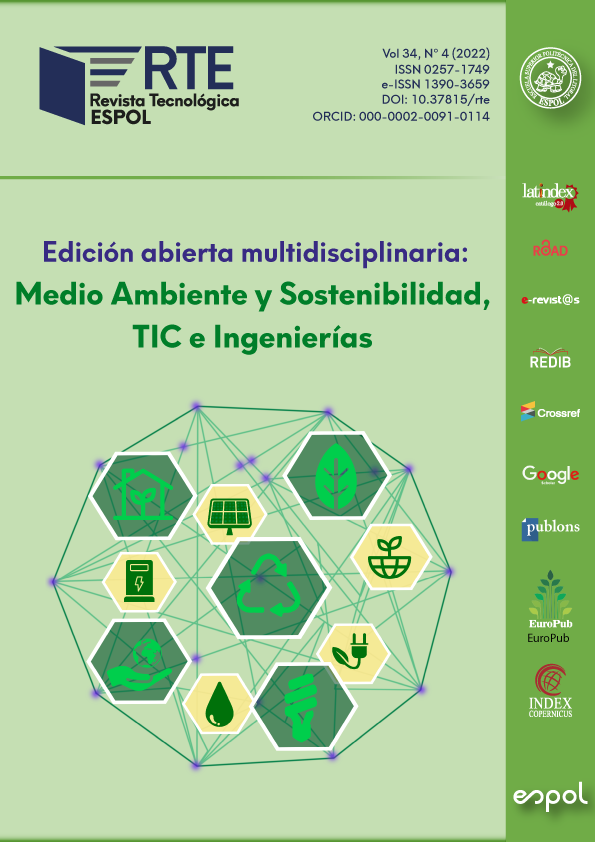A low density of pluviometric stations on the coast of Ecuador, together with discontinuous and incomplete records, induce the estimation of the equations of the intensity-duration-frequency (IDF) curves to be complex. It leads to overestimates or underestimates of rainfall in sectors without enough data. The purpose of this research is to create a regionalized map of the parameters for the equation of the IDF curves in the provinces of Santa Elena and Manabí. The precipitation data from the available meteorological stations were used in statistical analysis to verify if they adjust a probabilistic distribution. In addition, each parameter of the equations corresponding to each station has been determined by using multiple linear regression. The resulting parameters were distributed in the study area through spatial analysis methods such as Inverse Distance Weighting and Ordinary Kriging in the QGIS software. The validity of each method has been demonstrated with stations that have been excluded in the spatial analysis. Therefore, an error of less than 10% has been verified. The Ordinary Kriging method has shown a more adequate distribution, from which the map published in ArcGIS Online has been generated. This map allows the reading of the parameters for the equation of the IDF curves at any coordinate inside the study provinces.

This work is licensed under a Creative Commons Attribution-NonCommercial 4.0 International License.
References
Acosta C., P. M., & Caro C., C. A. (2016). Regionalización De Parámetros Hidrológicos. Aplicación para Intensidad Media de Precipitación. V Congreso Internacional de Ingeniería Civil, 56–62. http://revistas.ustatunja.edu.co/index.php/lingenieux/article/view/1366
Aparicio Mijares, F. J. (1992). Fundamentos de Hidrología de superficie. Limusa.
Bernard, M. M. (1932). Formulas For Rainfall Intensities of Long Duration. American Society of Civil Engineers. https://doi.org/10.1061/TACEAT.0004323
Campos Aranda, D. F. (1998). Procesos del ciclo hidrológico. Universidad Autónoma de San Luis Potosí. https://repositorioinstitucional.uaslp.mx/xmlui/handle/i/3331
Canavos, G. C. (1994). Probabilidad y Estadística - Aplicaciones y Métodos. McGraw-Hill Companies.
Carrera Villacrés, D. V., Guevara García, P. V., Tamayo Bacacela, L. C., Balarezo Aguilar, A. L., Narváez Rivera, C. A., & Morocho López, D. R. (2016). Relleno de series anuales de datos meteorológicos mediante métodos estadísticos en la zona costera e interandina del Ecuador, y cálculo de la precipitación media (Vol. 34). http://www.dspace.uce.edu.ec/bitstream/25000/14601/1/Relleno%20de%20series%20anuales%20de%20datos%20meteorol%C3%B3gicos%20mediante.pdf
Chereque Morán, W. (1989). Hidrología para estudiantes de ingeniería civil (2a ed.). PONTIFICIA UNIVERSIDAD CATOLICA DEL PERU. http://repositorio.pucp.edu.pe/index/handle/123456789/28689
Chow, V. T., Maidment, D. R., & Mays, L. W. (1994). Hidrología Aplicada (1a ed.). Mcgraw Hill Interamericana S A.
Comisión Nacional para el Conocimiento y Uso de la Biodiversidad (CONABIO). (2017). Regionalización. http://www.conabio.gob.mx/conocimiento/regionalizacion/doctos/regionalizacion.html#:~:text=La%20regionalizaci%C3%B3n%20implica%20la%20divisi%C3%B3n%20de%20un%20territorio,conocimiento%20de%20los%20recursos%20para%20su%20manejo%20adecuado
Cressie, N. A. (1991). Statistics for spatial data. John Wiley & Sons INC. https://www.wiley.com/en-us/Statistics+for+Spatial+Data%2C+Revised+Edition-p-9781119115175
Gumbel, E. J. (1958). Statistics of Extremes. Columbia University Press.
Hershfield, D. M. (1961). Rainfall Frequency Atlas of the United States, for Durations from 30 Minutes to 24 Hours and Return Periods from 1 to 100 Years. U.S. Weather Bureau Technical Paper No. 40, May 1961, 61. https://reduceflooding.com/wp-content/uploads/2018/09/TechnicalPaper_No40.pdf
Instituto Nacional de Meteorología e Hidrología (INAMHI). (2008). Estudio Hidrológico de Inundaciones en la Cuenca Alta de Chone. https://issuu.com/inamhi/docs/chone
Johnson, R. A., Miller, I., & Freund, J. (2012). Probabilidad y estadística para ingenieros (8a ed.). Pearson Educación de México.
Open Geospatial Consortium (OGC). (2022a). About OGC. Vision and Mission. https://www.ogc.org/about
Open Geospatial Consortium (OGC). (2022b). Standards. Web Map Service. https://www.ogc.org/standards/wms
Open Geospatial Consortium (OGC). (2022c). Standards. Web Coverage Service. https://www.ogc.org/standards/wcs
Pizarro, M. R., & Novoa, O. P. (1986). Elementos técnicos de hidrología. https://issuu.com/patricionovoa9/docs/elementos_t__cnicos_de_hidrolog__a_
Schöner, W., & Tveito, O. E. (2002). Applications of spatial interpolation of climatological and meteorological elements by the use of geographical information systems (GIS). Meteorologisk institutt. https://www.met.no/publikasjoner/met-report/met-report-2002
Shepard, D. (1968). Two- dimensional interpolation function for irregularly- spaced data. Proc. of 23rd ACM National Conference, 517–524. https://doi.org/10.1145/800186.810616
Varas C., E., & Bois, P. (1998). Hidrología Probabilística. Ediciones Universidad Católica de Chile.
Wackernagel, H. (2003). Multivariate Geostatistics (3a ed.). Springer. https://link.springer.com/book/10.1007/978-3-662-05294-5







